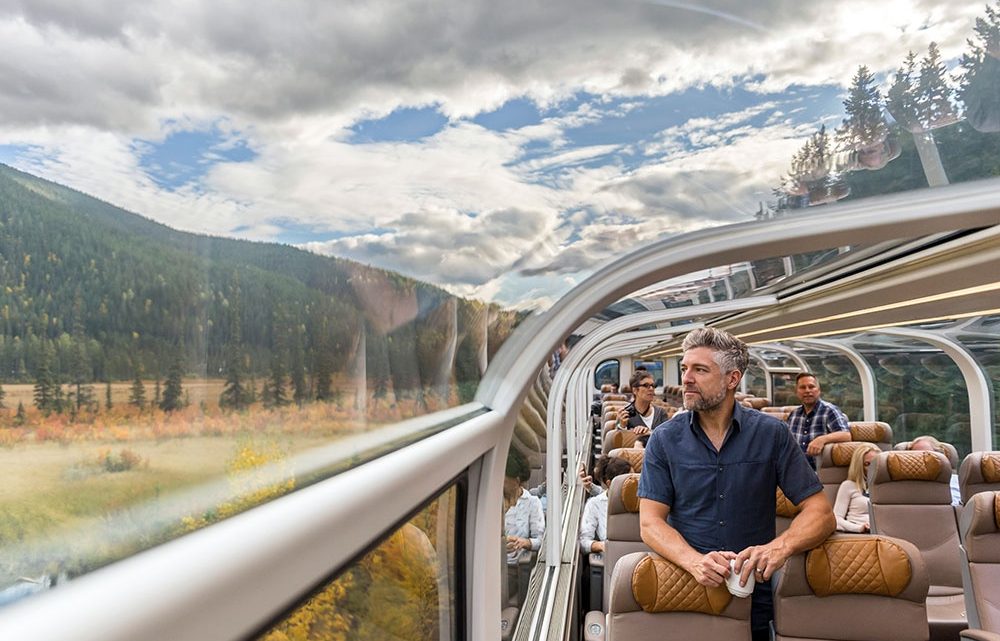
Choosing the Best Travel Option Between Car and Train
Exploring various methods of transportation can lead to intriguing discussions about efficiency, comfort, and enjoyment. Each mode offers distinct advantages that cater to different preferences and needs. When considering routes, one may ponder aspects such as speed, scenery, and overall experience, influencing personal decisions.
On one side, independent navigation provides flexibility and spontaneity, allowing travelers to dictate their own schedules and explore off the beaten path. Meanwhile, organized locomotion offers a relaxing atmosphere, often with breathtaking views outside, creating a serene environment while covering significant distances.
Finding a means that aligns with individual desires can transform an ordinary journey into an unforgettable experience. Understanding the unique features and benefits of each mode of transport is essential to making an informed decision that enhances one’s adventures.
Comparing Convenience of Car and Train
When evaluating different modes of transportation, convenience often plays a crucial role in decision-making. Factors such as flexibility, accessibility, and overall ease of use can significantly influence individual preferences. Understanding how each option measures up in these areas can help travelers make informed decisions tailored to their specific needs.
Flexibility and Freedom
One significant aspect of convenience is the level of flexibility offered. Some methods allow for spontaneous travel plans and detours, while others operate on fixed schedules and routes. The ability to stop as needed can enhance personal comfort and enjoyment throughout the journey.
Accessibility and Comfort
Accessibility is another vital consideration, particularly for those with mobility challenges or those traveling with children and luggage. Ease of boarding, comfort during the journey, and availability of amenities can greatly influence the overall experience. Offering a range of features can make one option more appealing than another.
|
Aspect |
Option A |
Option B |
|---|---|---|
|
Flexibility |
High |
Moderate |
|
Accessibility |
Moderate |
High |
|
Comfort Level |
Variable |
Consistent |
|
Travel Time |
Variable |
Scheduled |
Ultimately, analyzing these elements provides valuable insights into determining which option aligns best with personal preferences and circumstances. Careful consideration of flexibility, accessibility, and comfort can lead to a more enjoyable journey.
Cost Analysis of Automobile versus Rail Travel
When evaluating modes of transport, a detailed examination of expenses is crucial. Factors such as fuel, maintenance, and ticket prices play significant roles in determining overall financial impact. Understanding these aspects can enable individuals to make informed decisions tailored to their specific needs.
Fuel Expenses: When using a personal vehicle, fuel consumption directly affects overall costs. Prices per gallon can fluctuate significantly, making budgeting challenging. In contrast, public transportation often has set ticket prices that can be more predictable over time.
Maintenance and Depreciation: Owning a vehicle comes with continuous maintenance requirements and depreciation, which can greatly enhance the total cost of ownership over time. In comparison, public transport usually requires a one-time fare, eliminating concerns about wear and tear or long-term value loss.
Insurance and Other Fees: Vehicle owners are also burdened with insurance premiums, registration fees, and potential toll costs. These additional charges can accumulate quickly. Meanwhile, opting for public transport generally simplifies costs to a single fare, making budgeting straightforward.
Overall Value Assessment: While one might perceive immediate savings in fares, long-term evaluation should account for all associated expenses. The results can vary based on distance, frequency of journeys, and personal circumstances, making this analysis essential for making savvy decisions regarding preferred modes of movement.
Travel Time: Assessing Speed and Delays
When considering overall journey duration, it’s essential to evaluate not only the pace of each mode of transport but also the likelihood of interruptions along the way. Individuals often seek the quickest route, but unforeseen factors can significantly impact this experience.
Acceleration is a major factor in determining how fast one can reach a destination. While some methods are inherently quicker in ideal conditions, others may provide a more stable pace. Assessing the actual time spent versus the anticipated duration can lead to insights about reliability and efficiency.
Delays can arise from numerous elements, including weather conditions, infrastructure challenges, or operational setbacks. Understanding average wait times and potential hold-ups is crucial to make an informed decision. This analysis not only helps in planning but also in setting realistic expectations for arrival times.
Ultimately, comparing average speeds alongside probable disruptions offers a comprehensive perspective on journey durations, enabling individuals to select the mode that aligns with their priorities and schedules.
Environmental Impact of Cars and Trains
The ecological footprint of various modes of transportation significantly influences our planet’s health. Each option comes with distinct consequences regarding emissions, resource consumption, and land use. Understanding these impacts is crucial for making informed decisions that align with sustainable practices.
Additionally, energy consumption patterns differ vastly across transport types. Some rely heavily on fossil fuels, whereas others utilize electricity or renewable resources, potentially reducing reliance on non-renewable energy sources. This difference further emphasizes the importance of selecting eco-friendly travel options whenever possible.
Land use is another crucial consideration. Certain methods require extensive infrastructure, often leading to habitat destruction and fragmentation. In contrast, others may utilize existing pathways or tracks, preserving natural landscapes. Analyzing these factors helps illuminate the broader consequences of our transportation habits.
Comfort and Amenities: What to Expect
When it comes to selecting a mode of transportation, comfort and available facilities can significantly influence one’s experience. The level of convenience and luxury provided often varies greatly, shaping how enjoyable journeys can be. Understanding what each option offers can help individuals make informed decisions that cater to their personal preferences.
Seating Arrangements and Space
In terms of seating, both options can range from basic to luxurious, depending on specific services offered. One may find spacious seating with adequate legroom in a more upscale scenario, allowing travelers to stretch and relax during transit. Conversely, more economical choices may feature tighter seating arrangements, which could result in a less leisurely experience.
Onboard Facilities and Services
While en route, passengers might also enjoy various amenities that enhance their comfort. Services such as complimentary refreshments, entertainment options, and Wi-Fi access are common in higher-end experiences. Additionally, some venues may provide restrooms and power outlets for personal devices, ensuring convenience throughout the duration of the journey. The overall atmosphere, including cleanliness and noise levels, also plays a crucial role in determining satisfaction.
Ultimately, evaluating the comfort and facilities available can vastly improve travel experiences, making it essential to consider these factors when planning a trip.
Flexibility in Itinerary Planning and Stops
When considering different modes of transportation, the ability to adjust plans and incorporate spontaneous detours can significantly enhance the overall experience. This aspect allows travelers to customize their journeys, adapting to personal preferences and unexpected discoveries along the way.
Advantages of High Versatility
-
Freedom to change destination or route without constraints.
-
Opportunity to explore hidden gems and local attractions.
-
Ability to take breaks at any desired point, ensuring comfort and enjoyment.
-
Flexibility in scheduling can accommodate personal timelines and preferences.
Considerations for Planning
-
Evaluate personal preferences regarding spontaneity versus structured schedules.
-
Assess the possibility of extended stops and their significance in the overall journey.
-
Consider local regulations or limitations that may impact flexibility.
-
Understand the logistical implications of having a more adaptable itinerary.
Questions and answers: Car or train
What are the main advantages of traveling by car compared to traveling by train?
Traveling by car offers several advantages, including flexibility in your schedule, the ability to take spontaneous detours, and more privacy. You can leave and arrive at your convenience without being bound by train timetables. Additionally, you can carry more luggage without worrying about strict weight limits and enjoy the comfort of your own space. However, driving also requires dealing with traffic and navigation, which can be stressful compared to the ease of sitting back on a train.
Are trains generally cheaper than cars for long-distance travel?
In general, trains can be more cost-effective for long-distance travel, especially when considering expenses like fuel, tolls, and parking fees associated with driving a car. Train tickets can be purchased in advance at reduced prices, and there are often discounts for students, seniors, and groups. However, the cost comparison can depend on specific routes, ticket availability, and how many travelers are in your group. It’s advisable to check both car travel costs and train fares to see which is more economical for your trip.
What are the environmental impacts of choosing a car over a train for travel?
When considering environmental impacts, trains generally have a lower carbon footprint than cars. Trains, especially electric ones, are more energy-efficient and produce fewer greenhouse gas emissions per passenger mile. Cars, on the other hand, contribute significantly to air pollution and traffic congestion, especially if used for solo travel. If minimizing your environmental impact is important to you, opting for train travel is often a better choice, particularly for long distances.
How do comfort levels compare between cars and trains during travel?
Comfort levels can vary significantly between cars and trains. In a train, passengers can move around freely, access dining cars, and enjoy larger seating spaces, which can make for a more relaxing journey. Trains are also equipped with amenities such as restrooms and sometimes even Wi-Fi. In contrast, car travel may provide a more personal space, but it can be less comfortable for longer trips, especially with multiple passengers in a confined space. Ultimately, it depends on the individual preferences and how well each mode of transport caters to your comfort needs.
What should I consider when deciding between traveling by car or train?
When deciding between travel by car or train, consider several factors: distance, budget, time constraints, comfort, and personal preferences. If you need to travel a shorter distance or require flexibility in your itinerary, a car might be more suitable. For longer distances where you can relax and enjoy the scenery without the stress of driving, a train could be the better option. Additionally, think about your travel companions, as groups may save money by taking a car, while solo travelers could benefit from the social aspects of train travel. Finally, consider environmental impacts if sustainability is a priority for you.
Is it better to take the train or rent a car for a road trip through scenic villages?
The choice between taking the train or renting a car depends on how you want to travel. Renting a car offers flexibility to hop between scenic villages, stop whenever you like, and explore off the beaten path. However, taking the train can be more relaxing, allowing you to read a book and enjoy the scenery without the hassle of driving. If you’re traveling between major cities, the train may be more cost-effective and less stressful than managing a rental car.
What are the pros and cons of renting a car vs taking the train when traveling in Munich?
Renting a car in Munich provides the convenience of visiting remote areas and villages that may not be easily accessible by train. However, Munich has an excellent public transit system, and taking the train can be a more hassle-free way to travel, especially if you’re traveling between major cities. Parking and navigating busy streets may make a rental car less appealing, while trains offer a smoother experience without the need to deal with traffic or parking.
What is the most cost-effective way to travel when you’re visiting multiple stops along the way?
If you’re planning to visit multiple stops along the way, taking the train is often more cost-effective, especially in countries with strong railway networks. Train travel eliminates the need for rental cars, fuel, and parking fees, and allows for easy access to major cities and smaller destinations. However, renting a car may be more economical if you’re traveling in remote areas without convenient train or bus options.
How does traveling by train vs rental car compare for a trip that ends at a final destination in a remote village?
When your final destination is a remote village, renting a car can provide the freedom to travel directly and make stops along the way. However, taking a train to the nearest station and then using public transit or a local rental car can be a less stressful and more eco-friendly option. Train travel lets you avoid the hassle of long-distance driving, especially when you’re unfamiliar with local roads.
What are the benefits of taking the train instead of driving for long trips in major cities like New York or Chicago?
Taking the train in major cities like New York or Chicago can be less stressful than dealing with traffic and parking. Trains offer a smoother experience, with the ability to read a book or relax, and they connect you to major stations right in the city center. In contrast, driving a rental car through these cities can involve high costs, navigating busy streets, and finding parking, making public transit or trains a more convenient option.








